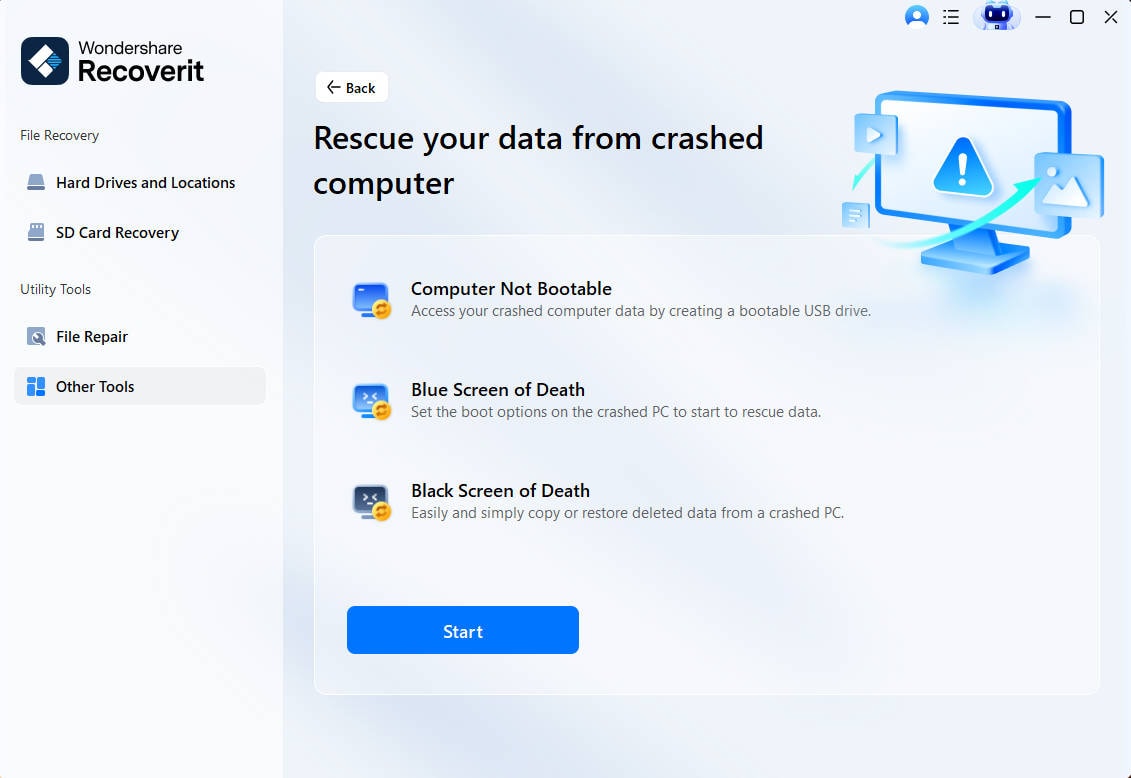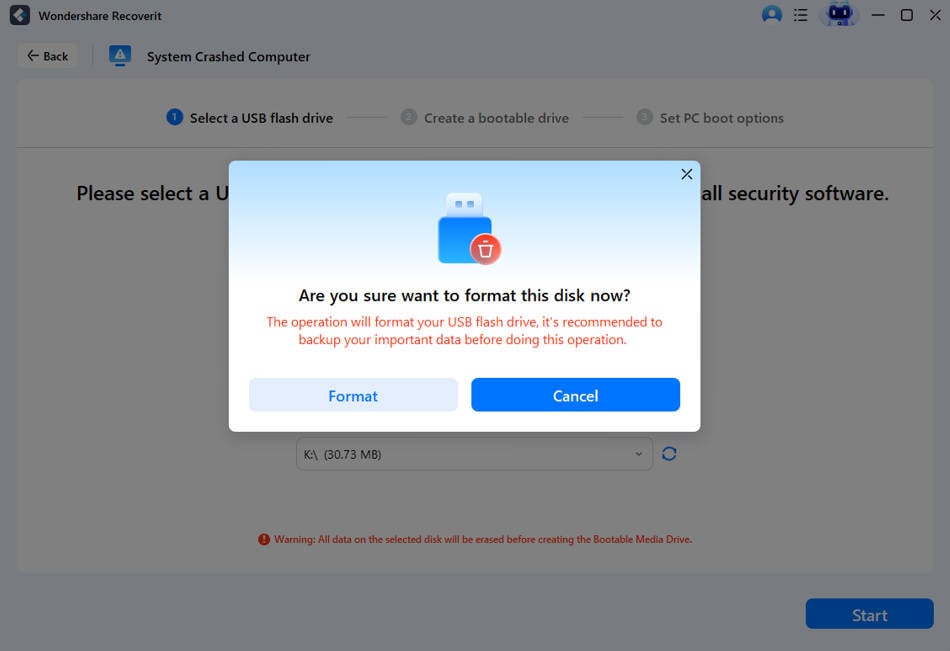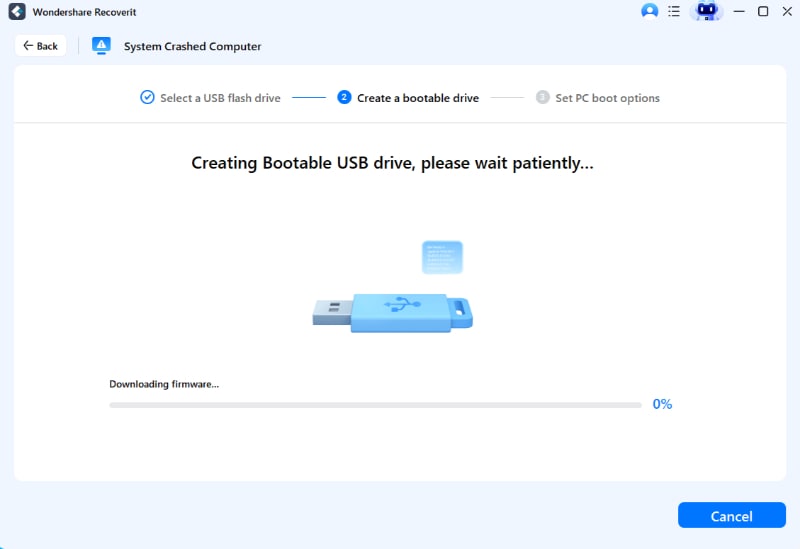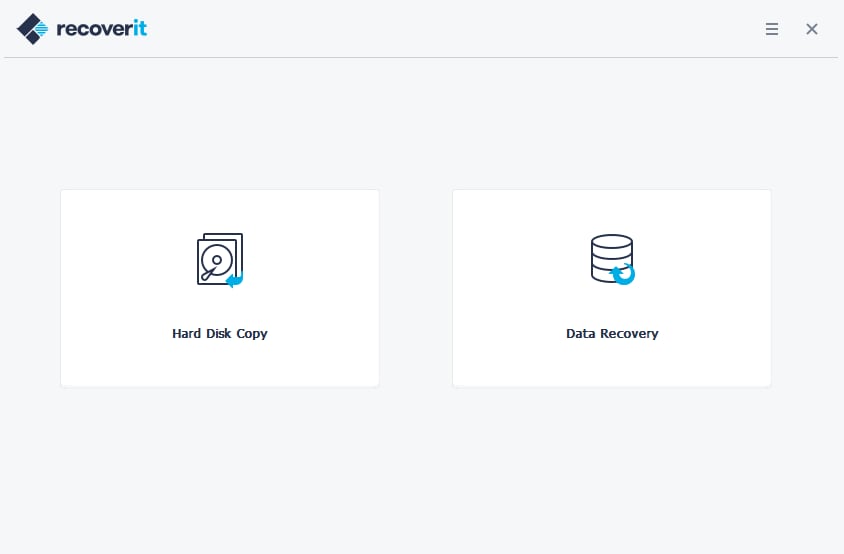Ever resized a partition on your hard drive, only to find some of your valuable storage space has mysteriously disappeared? It’s a common and frustrating issue for many computer users. You thought you were optimizing your storage, but now it feels like you’ve lost important gigabytes.
Don't worry - you're not alone, and there are solutions to this puzzling problem.
In this article, we'll dive into the mystery of why hard drive space missing after a partition shrink. We'll explore the top reasons behind this issue and provide you with practical fixes to recover your lost space. Whether you need to recover the unallocated space, recover lost partitions, or even recover files from a deleted partition, we've got you covered.
Try Wondershare Recoverit to Perform Partition Recovery

In this article
Part 1: Why Hard Drive Space Missing After Partition Shrink: Top Reasons
When you shrink a partition, you expect the freed-up space to be available for use. However, sometimes this doesn't happen, and you're left wondering why your hard drive space miss after the partition shrink.
Let's look at some common reasons for this frustrating situation:
- Hidden Recovery Partition: Many computers have a hidden recovery partition that holds files for fixing your PC. When you reduce the size of a partition, this hidden recovery partition might stop the newly available space from being used.
- Partition Alignment Problems: Newer hard drives need partitions to be set up correctly. If a partition isn't aligned right after being reduced, the extra space might not be usable.
- File System Limits: Some file systems have size limits. If reducing a partition makes it too small, the extra space might not be accessible.
- Disk Errors: If your hard drive has errors or damaged areas, it can cause problems with partition changes and make space seem to disappear.
- Incomplete Shrink Operation: If the process of reducing a partition is stopped or doesn't finish correctly, it can lead to lost space that isn't properly managed.
- Operating System Constraints: Certain operating systems have specific requirements for how partitions are structured. These constraints can sometimes lead to unusable space after a shrink operation.
- Logical vs. Physical Partitions: In some cases, the logical partition layout doesn't match the physical layout, leading to discrepancies in available space.
Understanding these reasons is the first step in figuring out how to recover the unallocated space or recover lost partitions. In the next section, we'll explore various fixes to help you reclaim that disappeared hard drive space after your partition shrink adventure.
Part 2: Hard Drive Space Missing After Partition Shrink? Try These Fixes!
Now that we understand why hard drive space missing after a partition shrink, let's explore some practical fixes. Each of these solutions is designed to help you recover the unallocated space or resolve issues that may have caused the disappearance.
We'll explain why each fix is useful and then provide step-by-step instructions.
Fix 1: Run the SFC Scan
The System File Checker (SFC) is a Windows utility that can help identify and repair corrupted system files. This can be crucial if your hard drive space disappeared after a partition shrink due to file system errors.
Why use SFC?
- It checks for and repairs corrupted Windows system files
- It can resolve issues that might be preventing proper partition recognition
Steps to run SFC scan:
- Open Command Prompt as administrator. Type sfc /scannow and press Enter.

- Wait for the scan to complete (it may take some time). Restart your computer
Fix 2: Run the CHKDSK Command
CHKDSK (Check Disk) is another powerful Windows utility that can help identify and fix various disk-related issues.
Why use CHKDSK?
- Detects and fixes most common file system errors
- It checks for bad sectors on your hard drive
- It can help recover lost clusters, potentially freeing up disappeared space
Steps to run CHKDSK:
- Open Command Prompt as administrator Type chkdsk X: /f (replace X: with your drive letter if different).

- Press Enter and confirm if prompted to schedule the scan at next reboot. Restart your computer to run the scan
Fix 3: Extend Disk Volume Using Disk Management
If you've shrunk a partition and the space isn't showing up as unallocated, you might be able to extend the volume using Windows Disk Management.
Why use Disk Management?
- It provides a graphical interface for managing partitions
- It can help you extend volumes into unallocated space
Steps to extend disk volume:
- Right-click on the Windows icon. Now select "Disk Management". Locate the partition you want to extend. Right-click on it and choose "Extend Volume".

- Follow the wizard, selecting the amount of space to add. Click "Finish" to complete the process


Fix 4: Perform SFC and DISM Scan
Sometimes, combining SFC with the Deployment Image Servicing and Management (DISM) tool can resolve more complex system issues that might be affecting your partitions.
Why use SFC and DISM?
- DISM can repair the Windows image, which SFC uses as a reference
- Running both can fix a wider range of system file problems
Steps to run SFC and DISM:
- Open Command Prompt as administrator. Run DISM first by typing:
DISM /Online /Cleanup-Image /RestoreHealth
- Wait for DISM to complete, then run SFC: sfc /scannow. Restart your computer
Fix 5: Format the Partition
As a last resort, you might need to format the partition to reclaim the space. Note that this will erase all data on the partition, so make sure you have backups.
Why format the partition?
- It can resolve file system issues preventing proper space allocation
- It gives you a clean slate to work with
Steps to format a partition:
- Open Disk Management. Right-click on the problematic partition. Select "Format".

- Choose your desired file system (usually NTFS). Click "OK" to start formatting
Part 3: Recover Lost Partitions Easily: Restore Data with Recoverit
When your hard drive space disappears after a partition shrink, sometimes the problem is more serious than just hidden space. You might find that entire partitions are missing, or you need to recover files from a deleted partition. In these cases, a powerful tool like Recoverit can be a real lifesaver.
Recoverit is a special kind of software designed to help you find and get back lost data. Think of it as a digital detective that can search through your hard drive and find files you thought were gone forever. It's particularly good at dealing with partition problems, which makes it perfect for our situation.
Recoverit is a powerful data recovery tool that can help you:
- Recover lost partitions
- Recover files from deleted partitions
- Restore data from formatted drives.
Why Choose Recoverit?
There are several reasons why Recoverit is a great choice for recovering lost partitions:
- User-Friendly: You don't need to be a computer expert to use Recoverit. Its simple interface guides you through the recovery process step by step.
- Powerful Scanning: Recoverit uses advanced techniques to thoroughly search your hard drive. This means it can find partitions and files that other tools might miss.
- Versatile Recovery Options: Whether you need to recover an entire lost partition or just a few important files from a deleted partition, Recoverit has you covered.
- Preview Feature: Before you recover anything, Recoverit lets you see what it found. This way, you can be sure you're getting back the files you need.
- Safe to Use: Recoverit is designed to read your hard drive without making changes. This means it won't accidentally overwrite your lost data while trying to recover it.
When to Use Recoverit?
You should consider using Recoverit in these situations:
- Your computer says a partition is missing after you shrunk another partition.
- You can't see some of your files after messing with partitions.
- You accidentally deleted a partition while trying to fix space issues.
- Your partition shows up as "raw" or unformatted after trying other fixes.
- You've tried the simpler fixes we talked about earlier, but you're still missing space or files.
Here's how to use Recoverit to recover lost partitions:
- Install Recoverit on a working computer Launch the software and select "System Crashed Computer". Choose the drive where you lost the partition. Click "Start".

- Connect a blank USB drive to a working computer and ensure it is recognized. Select the USB drive to create bootable media and click “Create” to begin.

- Creating a bootable drive involves two steps:
- Formatting the USB drive.
- Creating the bootable drive.
- An alert will appear about formatting the USB drive, so ensure you have backed up any important data before proceeding.

- Connect the USB flash drive to the crashed computer. Restart the computer and press the BIOS entry key when the first screen appears (the key may vary by system). Adjust the BIOS settings to boot from the USB drive.

- Once the computer boots from the USB drive, it should become operational. Choose “Data Recovery” to recover your data.

- Remember, when trying to recover lost partitions or recover files from a deleted partition, it's crucial to act quickly and avoid writing new data to the drive to prevent overwriting your lost files.
Part 4: Tips to Recover Files From Deleted Partition
If you need to recover files from a deleted partition, here are some additional tips to increase your chances of success:
- Stop using the drive immediately to prevent overwriting data
- Use reliable recovery software like Recoverit
- Recover files to a different drive to avoid data conflicts
- If possible, create a disk image before attempting recovery
- Consider professional help for critical data recovery
Conclusion
Dealing with missing hard drive space after a partition shrink can be frustrating, but it's not an insurmountable problem. By understanding the reasons behind the issue and applying the fixes we've discussed, you can often recover the unallocated space and get your hard drive back to its full capacity.
Remember, whether you need to recover lost partitions or recover files from a deleted partition, there are tools and methods available to help.
Always proceed with caution, make backups when possible, and don't hesitate to seek professional help for critical data recovery situations.
Try Wondershare Recoverit to Perform Data Recovery

FAQ
-
Q: Can I recover files from a deleted partition without software?
While it's theoretically possible, it's extremely difficult and risky without specialized software. Using reputable recovery tools like Recoverit is generally the safest and most effective method to recover files from a deleted partition. -
Q: How can I prevent losing space when shrinking partitions in the future?
To avoid losing space, always use built-in tools like Disk Management, ensure your drive is error-free before shrinking, and be aware of any hidden or recovery partitions that might interfere with the process. -
Q: Is it safe to use third-party partition managers?
Many third-party partition managers are safe and offer more features than built-in tools. However, always research and choose reputable software, and back up your data before making any partition changes.




 ChatGPT
ChatGPT
 Perplexity
Perplexity
 Google AI Mode
Google AI Mode
 Grok
Grok























